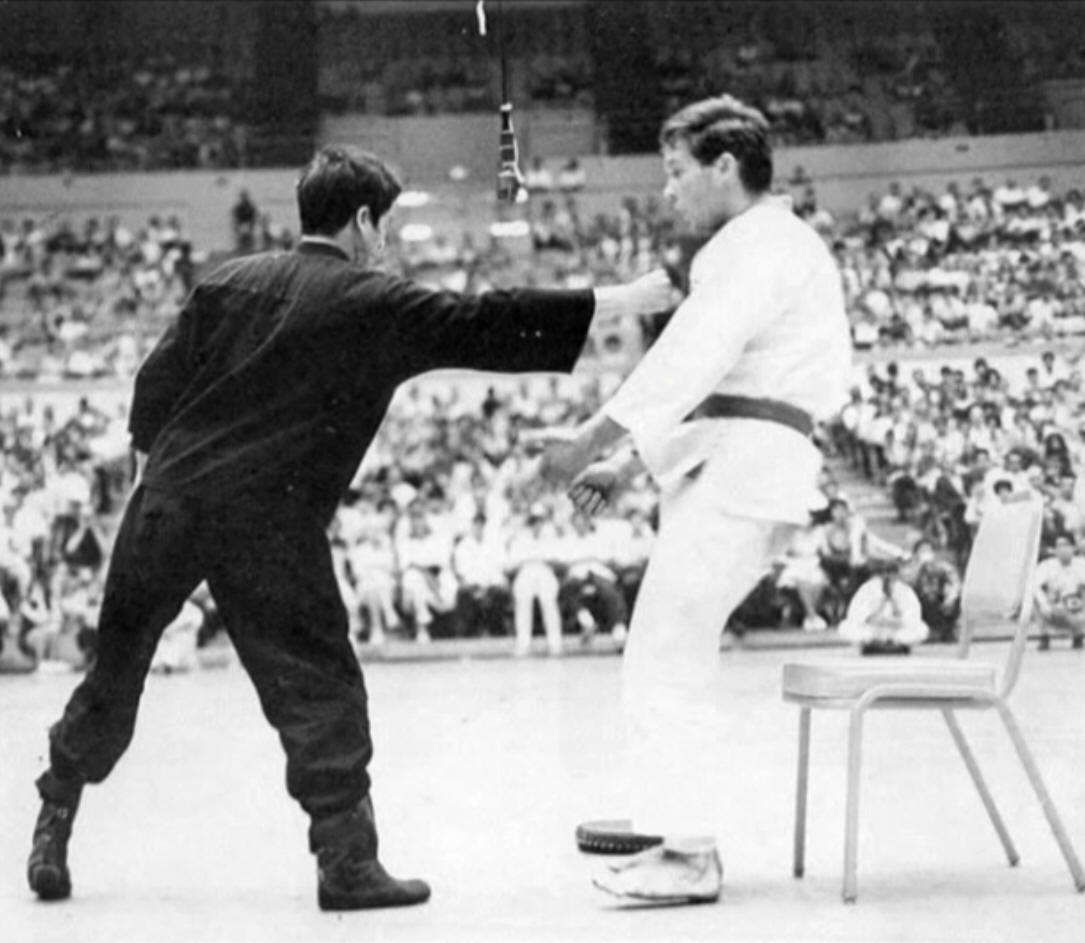The Science Of Bruce Lee’s One Inch Punch
The one inch punch was made famous by Bruce Lee. It is designed to improve punching power and technique. Lee learned the technique from his Wing Chun training in Hong Kong.
Recently Popular Mechanics set out to solve the mystery behind it.
Biomechanical Breakdown
To understand why the one-inch punch is more about mind than muscle, you first have to understand how Bruce Lee delivers the blow. Although Lee’s fist travels a tiny distance in mere milliseconds, the punch is an intricate full-body movement. According to Jessica Rose, a Stanford University biomechanical researcher, Lee’s lightning-quick jab actually starts with his legs.
“When watching the one-inch punch, you can see that his leading and trailing legs straighten with a rapid, explosive knee extension,” Rose says. The sudden jerk of his legs increases the twisting speed of Lee’s hips—which, in turn, lurches the shoulder of his thrusting arm forward.
As Lee’s shoulder bolts ahead, his arm gets to work. The swift and simultaneous extension of his elbow drives his fist forward. For a final flourish, Rose says, “flicking his wrist just prior to impact may further increase the fist velocity.” Once the punch lands on target, Lee pulls back almost immediately. Rose explains that this shortens the impact time of his blow, which compresses the force and makes it all the more powerful.
By the time the one-inch punch has made contact with its target, Lee has combined the power of some of the biggest muscles in his body into a tiny area of force. But while the one-inch punch is built upon the explosive power of multiple muscles, Rose insists that Bruce Lee’s muscles are actually not the most important engine behind the blow.
“Muscle fibers do not dictate coordination,” Rose says, “and coordination and timing are essential factors behind movements like this one-inch punch.”
Because the punch happens over such a short amount of time, Lee has to synchronize each segment of the jab—his twisting hip, extending knees, and thrusting shoulder, elbow, and wrist—with incredible accuracy. Furthermore, each joint in Lee’s body has a single moment of peak acceleration, and to get maximum juice out of the move, Lee must layer his movements so that each period of peak acceleration follows the last one instantly.
via Neatorama

